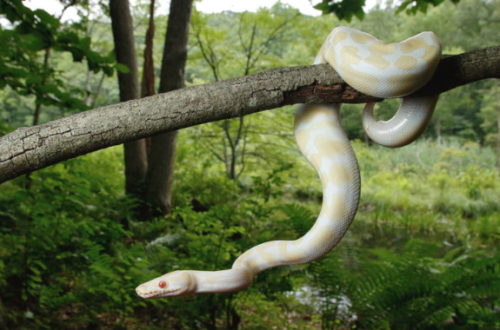Modifying a Glass Tank for a Ball Python
I decided to put this in its own post to make it easier to find and reference. These tips are great for any species of reptile that require higher humidity and heat, including boas of all kinds, baby tegus, and other species of pythons. Just keep in mind that lizards will need added UVB light. Please check out the full care and info sheet on Ball Pythons for specifics on temps, feeding, and housing.
If you must keep your ball python in a glass tank, here are some tips to make your snake happier in it.
Ball pythons need to feel safe and secure, have humidity levels of 55-70%, and have temperatures that range from 75-88 degrees F. Listed below are modifications and recommendations to best meet those needs in a less than ideal enclosure.
SECURITY: Cover 3 sides with black foam core poster board to insulate the tank and make it feel more secure. You can add a photo background between the glass and the foam if you want to make the enclosure more aesthetically pleasing, but the snake is not going to care either way.
In a tank or other open enclosure, you need hides, one on the hot side and one on the cool side at the very least. We prefer these black plastic hides or similar as they can be easily cleaned. Those half-log wood hides are just bacteria and mold factories and not “hidey” enough for your BP to be super happy. You will want to provide extra cover or clutter so your snake feels more comfortable moving about, like vines and plants. Be sure there are no loops your snake can get stuck in or any sharp or metal edges anywhere.
HUMIDITY: Tape the top of your screen lid with all-weather duct tape or HVAC foil tape. Snakes don’t need a lot of ventilation, so cover most of it, just leaving a square for your dome lamp. This will trap the heat and humidity inside your enclosure, so you won’t have to mist or will have to mist less often.
HEATING: Use a Ceramic Heat Emitter to heat your tank. CHEs do not dry things out as badly as incandescent bulbs. THROW AWAY YOUR BASKING LIGHT. Ball Pythons do not bask. Under-tank heat mats by themselves will not raise the temperature in your tank high enough for your ball python. If you want to use one to create a warm spot under a hide, be sure to always use a thermostat* to keep it from overheating. And for the love of all that’s holy, never ever use a hot rock. They really should be banned from the market with how often they fail and damage snakes.
*NOTE: The thermostat probe should be placed between the heat mat and the underside of the tank. Set it to 90-92 degrees to keep the mat from overheating.
HEAT CONTROL: Use a thermostat to keep your temps steady. We recommend a Herpstat or VE-200 as they are dimming and keep temps very even. If you can’t afford a $100+ thermostat, the Zoo Med ReptiTemp or BN-Link thermostat from Amazon are good economical choices. Place your probe 1/2 way down on the hot side and set it to 87 degrees. Use a temp gun to make sure the substrate under your heater is no hotter than 92 degrees. Adjust the thermostat as needed.
Throw away those dial temp/humidity gauges that came with your tank. They are wildly inaccurate. Digital thermometers are much more accurate. An infrared temp gun is a must-have to make sure surface temps are not too warm for your snake. When you measure temps, just be sure you’re not going through the glass. You need no barriers between you and what you’re measuring.
If your snake has proper hides and your husbandry is spot-on, he will spend 90% of his life hiding. If your young BP roams the enclosure daily or climbs a lot, then he’s likely stressed and unhappy with his environment. A happy BP is a hidey BP.
TROUBLESHOOTING
If your snake isn’t eating regularly, sheds come off in pieces, or he’s roaming a lot, here are some things to consider.
Check your temps. Low temps will lead to poor digestion and lack of appetite. Even if your temps are good, try bumping them up a degree or two or reducing them if they’re closer to 90 degrees than 88 degrees.
Check your humidity. You should not mist your snake enclosure! If you’re having to mist, then your enclosure is not ideal. Try using pure cypress or coco chips as your substrate to bump up humidity. Get a bigger water bowl and put it closer to the hot side. Plug up any holes in the screen lid.
Roaming snake: More hides, blackout more of the glass, check temps, or try putting him in a smaller enclosure or blocking off a portion of your current enclosure. Move your snake to a quieter room with less traffic or activity. Turn down your stereo. Snakes are sensitive to vibrations so loud music or a lot of bass can make them unhappy.
Adult BPs can get restless and go off feed during the breeding season, which is usually late winter to early summer. This happens more commonly if you have mature snakes of both sexes in the same room. We have only experienced this with a small percentage of snakes, which makes me feel like it is not as common as people would like to think. If your snake is young, less than 1000 grams or 2 years old, then this does not apply at all.




